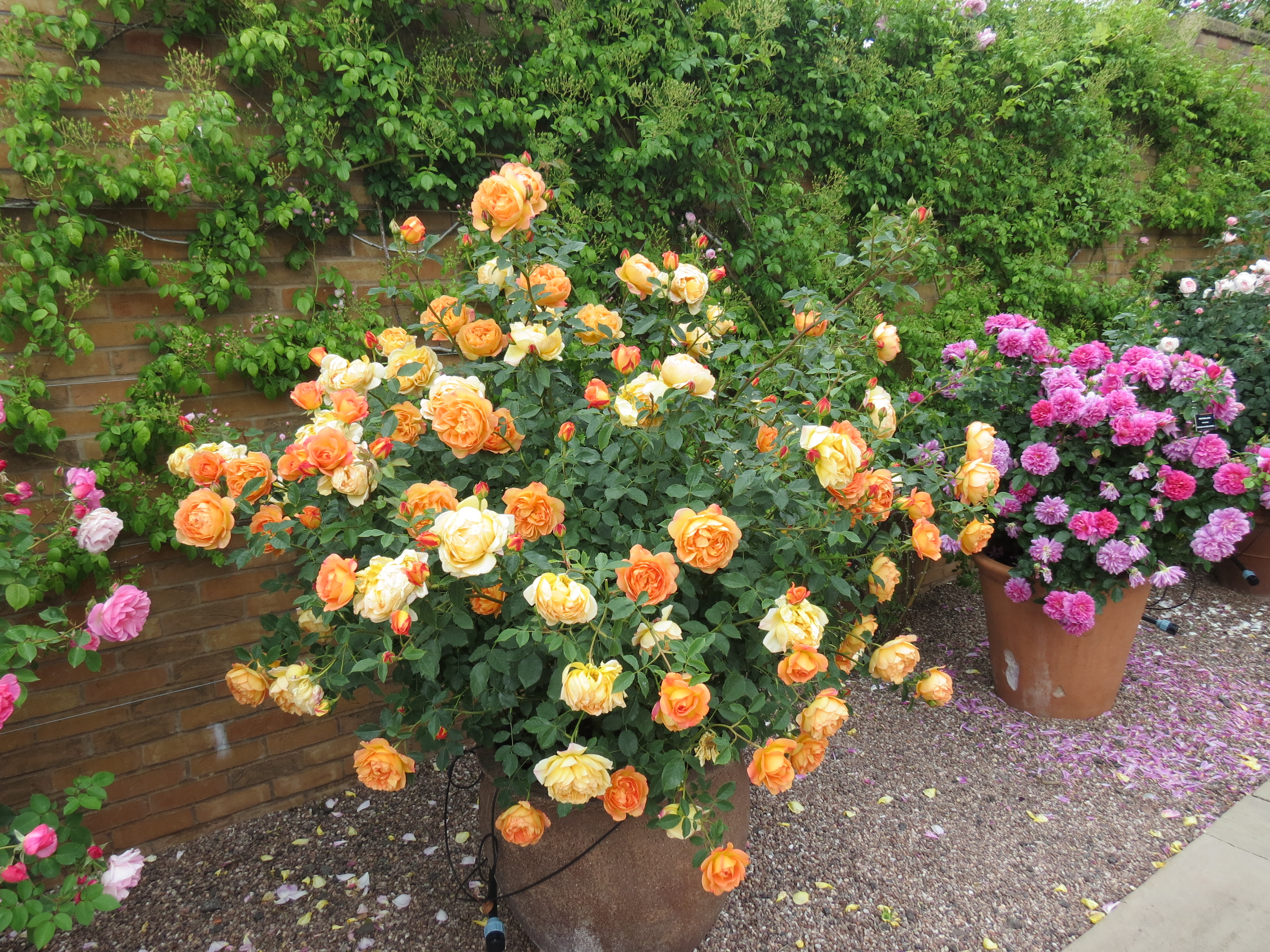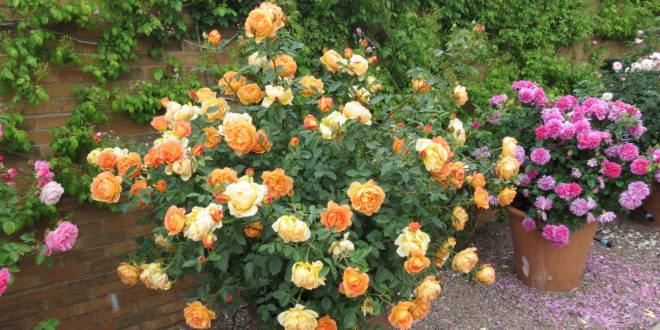Growing plants in containers is a popular past time for many of us, especially if we have smaller gardens or no garden at all, such as renting a property. Roses can be grown in pots but many people run into problems down the track and get disillusioned with their potted roses.
First of all, most types of roses can be grown in pots ranging from patio and miniature roses through to bush roses and standards, although bear in mind standards can become top heavy when in growth so factor that into your plans. Larger shrub roses and climbers are generally not suited to growing in pots, although there is no reason with a decent sized container and the proper support they could be grown.
There is a vast array of pots available so whatever you use is up to your own preferences and budget. I would suggest for bush roses, a diameter of at least 30cm and more if you can. Remember, the larger the pot, the harder it will be to move around.

Like roses in the garden, roses in pots need fertilising and watering and it is even more critical since the plant is totally reliant on what is in the pot for its needs, rather than being able to seek nutrients and water from the surrounding soil like they can in the garden.
Pots need to be kept watered and I would suggest you use the best quality potting mix you can find and also add some water crystals which are useful, but are not a magic bullet for keeping the soil moist– you will still need to water on a regular basis. Remember that concrete and terracotta pots will attract the heat more and will dry out quicker, as will darker coloured pots. Plastic pots are much lighter and therefore easier to move about but do also attract the heat.
Also, don’t overfill your pots, but keep the soil level at least one centimetre below the rim so the water doesn’t simply roll off. Drainage is also important as roses, as with many plants, do not like their roots to sit in water so look for pots with more than one hole in the bottom. It is possible to drill more but there is always the risk of breaking terracotta and concrete pots.

Fertilising is also important and like garden roses, needs to be done on a regular basis with a controlled release fertiliser for best results. Don’t overfeed as you may end up with burning of the roots and always make sure the soil is moist.
Perhaps the biggest tip I can give you for potted roses is that every 3-4 years in winter after you have pruned, remove them from their pots, give them a good shake removing as much soil as you can, then repot with fresh potting mix. If not much mix falls off, cut the lower third of the root ball off with a pruning saw. It does sound drastic but is well worth the effort and your rose will reward you with a better performance the next season.
In the Rose Garden for February
- Water your roses when dry.
- Start to prepare areas for plantings in winter by digging over and adding compost.
- Order rose plants for winter delivery especially any new and popular varieties as they can sell out quickly. Also, any varieties you want as a standard as these can be popular as well.
- If you are into budding onto rootstock, February is a good month to do it.
By Hayden Foulds
Hayden also serves as Deputy Chairman of the World Federation of Rose Societies Rose Trials Committee amongst other rose endeavours.










Join the Discussion
Type out your comment here:
You must be logged in to post a comment.